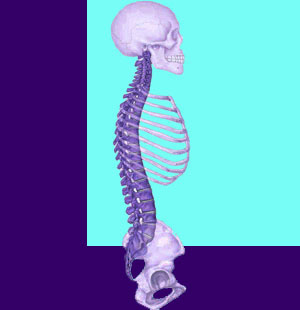
Spinal manipulation is the art and science of manually correcting the alignment of the spinal joints. This process is commonly known as a spinal adjustment. There are several distinct types of joints in the spine which can be manipulated. The most common of these are the vertebral synovial joints, the zygapophysial joints, the occipitoatlantal joint and the sacroiliac joints. Manipulation is an ancient healthcare practice which dates back thousands of years, but was brought into the modern world of medicine by the science of chiropractic.
This dialog covers the efficacy and uses for manipulation therapy in the human spine.
Spinal Manipulation Practitioners
Chiropractors are the main practitioners of manual manipulation of the spine. The entire science of chiropractic is based upon proper vertebral alignment creating ideal neurological pathways to maintain optimal general health. Other professionals who practice manipulation are some physical therapists, some osteopaths and certain varieties of massage therapists.
Manipulation is an exact science and should not be attempted by an untrained or under-trained individual. Failure to follow specific manipulation guidelines can result in serious back injury. Self-manipulation of the spinal bones can also be dangerous and should not be attempted. This includes trying to crack your own back or neck with your hands, any object or a device made expressly for this purpose.
Spinal Manipulation Methods
Manipulation can be done vigorously or gently. The amount of force used depends greatly upon the patient, the practitioner, the symptomatic condition and the anatomical location.
Individual patients respond differently to manipulation. It will generally take some time for the care provider and the patient to agree on the proper methods and force to be used in order to obtain the best results. It is always better to start with conservative manipulation until your body gets used to the idea of being forcefully repositioned.
Manipulation is designed to improve joint movement, correct vertebral alignment, reduce back pain, optimize neurological signals, increase flexibility and expand the range of motion throughout the spine.
Risks of Chiropractic Manipulation
Studies have linked manipulation to various serious health conditions, such as stroke, heart attack and seizures. These effects are extremely rare, but do sometimes occur. Far more common risks and side effects include localized or radiating soreness, headache, ringing in the ears, sinus activity and muscle tightness. Some patients experience a worsening of symptoms due to vertebral manipulation.
Make sure to report any unusual symptoms to your care provider after receiving manipulation of the spinal joints.
Spinal Manipulation Factsheet
Some healthcare professionals doubt whether manipulation does anything at all… beneficial or harmful. Other professionals recognize it as a valuable part of a combined care program. A few professionals believe manipulation to be the most important part of a person’s healthcare maintenance program, while the opposition might call it an extremely risky behavior.
Regardless of your thoughts on manipulation, there is no denying that it is an extremely popular and widespread form of treatment for common back pain conditions.
I used chiropractic manipulation as my main treatment for 18 years while suffering with chronic back pain. I never saw any definitive proof that chiropractic did anything at all to help my pain. It certainly never cured it.
I know that part of its effect was caused by placebo reaction and other part was most likely a conditioned response to receiving an adjustment. Remember that my symptoms were caused, at least in part, by a mindbody process, same as many other patients with long-term unresolved back pain.
For patients with particular types of true physically-induced structural pain syndromes, manipulation might just be a helpful and valuable part of a therapy regimen. Talk to your chiropractor or doctor to learn more.





